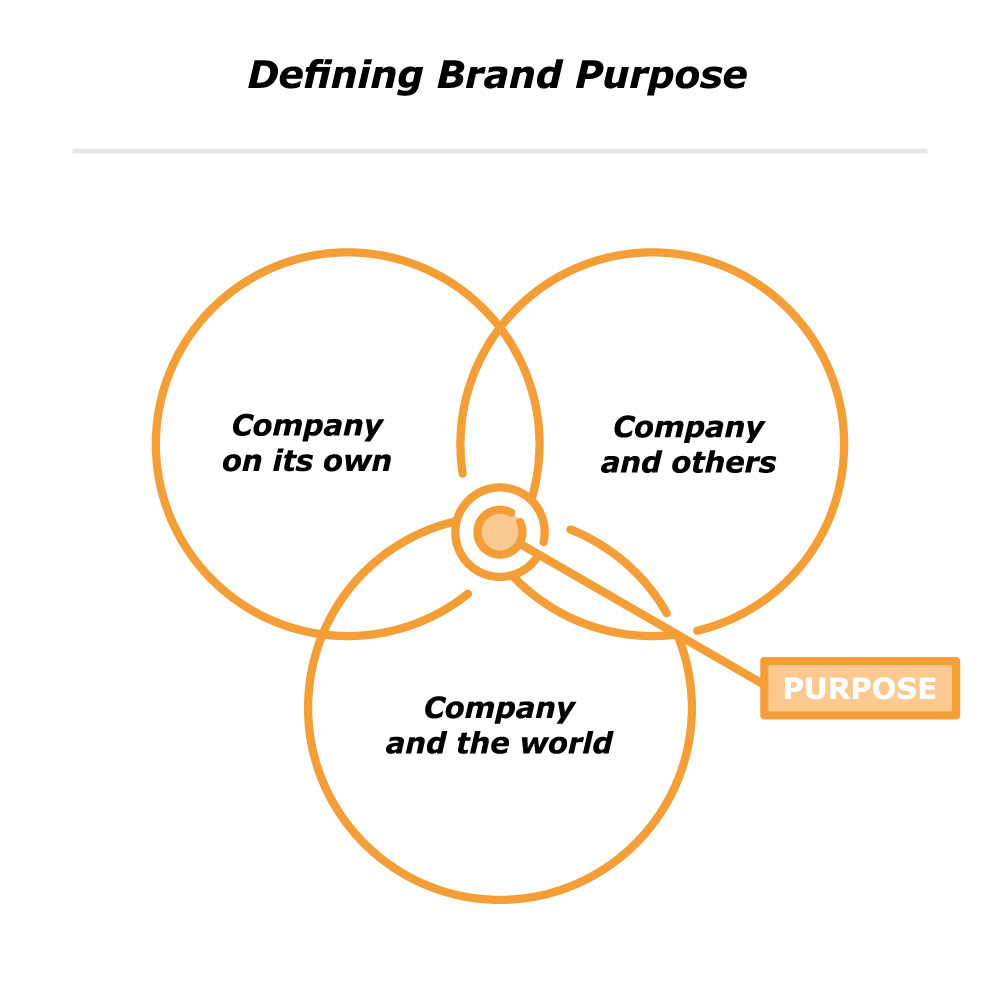Over the last few years, there’s been a lot of compelling information demonstrating the importance of a brand or organisation’s purpose. Just like mission, vision, and values before it, purpose is gaining in critical mass as an organisational architecture trend. Here, Roian Atwood, director of sustainability for Wrangler and Lee jeans, discusses the methodologies involved in discovering brand purpose – and how it was put into practice at Wrangler.
Over the last few years, there’s been a lot of compelling information demonstrating the importance of a brand or organisation’s purpose. Just like mission, vision, and values before it, purpose is gaining in critical mass as an organisational architecture trend.
Numerous studies and articles (see end) illustrate the overall business value that a strong brand purpose can deliver: a positive effect on employee morale, retention and performance, as well as a heightened connection with consumers that can increase brand health and even drive sales.
The CEO of Blackrock, Larry Fink, wrote the following in his 2019 letter to CEOs:
“When a company truly understands and expresses its purpose, it functions with the focus and strategic discipline that drive long-term profitability. Purpose unifies management, employees, and communities. It drives ethical behaviour and creates an essential check on actions that go against the best interests of stakeholders. Purpose guides culture, provides a framework for consistent decision-making, and, ultimately, helps sustain long-term financial returns for the shareholders of your company.”
But how do we get to purpose? What are the practical methodologies involved in discovering brand purpose? Defining anything requires an analytical approach, and purpose is no different.
A good purpose statement is the outcome of a thorough process, resulting in a crystal-clear reminder of strategic intent for people working within the company day-in and day-out. It’s meant to be personal and should serve as North Star for navigating business decisions with authenticity in an ever-changing world. It’s not marketing; purpose statements are not intended to be a clever, external facing communication.

US Tariffs are shifting - will you react or anticipate?
Don’t let policy changes catch you off guard. Stay proactive with real-time data and expert analysis.
By GlobalDataHere are a few of my favourite brand purpose statements:
- Starbucks: To inspire and nurture the human spirit – one person, one cup and one neighborhood at a time.
- Serta (the mattress company): To support the backbone of America.
- AirB&B: Creating a world where anyone can belong anywhere.
Three proven purpose methodologies
We recently completed a global purpose exercise at Wrangler, where I was exposed to multiple established methodologies for building an organisational purpose. (If you make it to the end of the article, I’ll reveal the outcome of our four-month journey on purpose).
I thought it would be valuable to share some insights from three thought leaders who have unique approaches to helping organisations develop stronger purposes and who have significantly influenced my thinking on the topic.
Simon Mainwaring, We First

The Los Angeles-based firm, We First, was founded by author and lecturer Simon Mainwaring. The core skillset of Mainwaring’s firm is branding and marketing, resulting in a focus on analysing a brand’s or organisation’s existing language as the key to discovering consistent themes that resonate with different stakeholders. Consequently, these themes can be leveraged and scaled.
To do this, Mainwaring examines an organisation’s history and relationships through three overlapping lenses:
- 1: The brand in isolation
- 2: The brand in relation to others
- 3: The brand in relation to the world
Mainwaring says the entire process typically takes 6-8 weeks to arrive at a final purpose statement and asks a provocative question: “What or who is your brand’s greatest enemy?” This thought-provoking question can spur hours of discussion and is meant to unearth the core, authentic identity that an organisation and its leaders will defend.
Udaiyan Jatar, Blue Earth Network
Based out of Atlanta, Blue Earth Network founder Udaiyan Jatar offers a comprehensive approach to business management that starts with purpose as the North Star that allows organisations to aim beyond incremental improvements to disruptive innovation.

The Blue Earth methodology is focused on driving behaviour change, without which Jatar believes purpose is useless in the business context. He’s careful to note behaviour change is not about getting people to adopt a product. Rather, he says the aim is for adoption of a belief or behaviour that positively impacts the individual and the world. When brands enable consumers to achieve that kind of change, he says, they build loyalty that transcends products and categories and cannot be displaced or commoditised by competitors.
By working closely with a leadership team, evangelical employees and consumers, Jatar says they can typically arrive at a clear statement of purpose in 3-4 weeks. To do this, he begins by asking brand leaders to look outward at society and identify the changes they’re passionate about seeing in the world. Jatar says a great purpose statement will endure across many generations of society and technology, when stated simply as: “Who you will help to achieve what.”
Haley Rushing, The Purpose Institute
Haley Rushing, co-founder of The Purpose Institute, arrives at purpose through an extensive qualitative and quantitative research process. First interviewing senior leadership, then what she calls the “most engaged” employees, and finally external stakeholders. Rushing developed The Purpose Venn Diagram, the roots of which she credits to Jim Collins, who wrote ‘Good to Great’ and co-wrote ‘Built to Last: Successful Habits of Visionary Companies.’
The Purpose Institute examines overlapping perspectives that focus on a company’s passion, strengths and response to societal needs:
- 1: What is a company built to do?
- 2: What does it love to do?
- 3: And, what does the world need it to do?

Depending on the size of the organisation, Rushing says the process typically takes 3–6 months to complete, and she aims for “relentless simplicity,” pruning away as many unnecessary ideas as possible to arrive at something that a child could understand.
When is the right time for purpose?
Ideally, a brand’s purpose is set at its founding, or soon after. But in the case of older, established brands, purpose may need to be revisited and reaffirmed.
Jatar says legacy brands often began with unspoken, implicit purposes that were muddled over time and need to be recovered to see what value can be married to modern aspirations for the businesses.
Mainwaring cautions that given the realities of today’s marketplace, every brand needs to be 100% clear on its purpose. If it isn’t clearly communicating that purpose internally and externally, he says the vacuum will be filled with misinformation. Purpose can be a much-needed exercise for reclaiming one’s own identity.
Clarifying purpose can also be useful when a company is rebuilding or beginning a change-management process. However, Rushing advises against engaging in purpose work before a planned leadership change. Despite best intentions of giving the incoming leadership a tool to work with, she says they’re unlikely to embrace purpose results they didn’t participate in creating.
Activating purpose and ongoing engagement
The purpose statement should be more than just a slogan painted on the wall of brand headquarters. It must be integrated into goals and decision-making across all aspects of the business. When done effectively, it can create a culture within the brand or organisation that connects to larger cultural movements in the world, thus creating real emotional bonds with consumers. Easier said than done.
Here are some best practices that have helped me to co-facilitate a purpose discovery with Wrangler’s global leadership:
- Ensure everyone on the core team comes to a good understanding of what purpose means, both from a psychological and business ROI standpoint. Addressing this early and connecting it to the day-to-day activities of each team member can help those who are squeamish about getting involved in “touchy feely” topics at work.
- Acknowledge the connection between purpose and philanthropy work the brand may have done in the past. This philanthropy will be important to many within the organisation and beyond, and it shouldn’t be discounted or left behind, even as the brand may be looking to align purpose more closely with brand identity.
- Include as many people as possible in the creation of a purpose statement. This is especially important in a large organisation in order to avoid the risk of revealing a purpose that falls flat. As Rushing explains, when you launch the final purpose statement, “People should be able to see their fingerprints all over it.”
- Socialise the purpose findings before launch. (This is related to the point above.) At Wrangler, we not only surveyed leadership and associates for data that went into the formation of the purpose statement, we also conducted regional presentations and webinars to pressure test our concepts of empowerment, confidence and frontiers with key teams around the globe.
- Envision what will happen after the launch. It’s important to have a plan for including purpose in quarterly meetings and business processes to serve as a guiding star. Ask: “How could can our purpose be expressed locally and in the community in formal or informal ways?”
Lastly, I recommend a purpose discovery NOT be presented as a sustainability initiative. It is important to show the intersections between sustainability and purpose but presenting the purpose discovery as a process that explores deeper meaning and revisits the identity and heritage of an organisation can inspire wider conversations and enthusiasm.
Here’s where we landed
If you’re unsure whether your organisation is due for a purpose refresh, then it is probably time. Another way to find out is to ask people in the organisation what the company’s purpose is. If their answers reflect the business that you’re in, such as selling jeans, instead of the impact you want to achieve in the world, your purpose isn’t clear and might need to be re-examined.
In case you’re wondering where Wrangler landed on our newly clarified statement of purpose, and the answer to why we exist:
To empower everyone with confidence to thrive in new frontiers.
It’s okay if you don’t like it, it’s not for you – a purpose is an internal reflection of a company’s most aspirational culture and reminds us why we go to work every day.
Each word in our purpose statement was passionately debated by both senior and functional leaders, and regardless of the actual words chosen to represent our purpose, the debate proved to be incredibly meaningful for all involved.
A purpose statement answers the question “Why do we exist in the world?” It doesn’t need to be prescriptive, but it should answer that question. We do not exist in a vacuum so it’s not enough for a company to operate from day to day and ignore pressing global issues.
No matter how uncomfortable or unfamiliar it is to explore your organisation’s reason for being, the leaders who do so demonstrate a commitment to redefining business in a way the world needs.
– Edelman 2017 Earned Brand Study “Beyond No Brand’s Land”
– Harvard Business Review. The Business case For Purpose.
– William, Freya (2015). Green Giants: How Smart Companies Turn Sustainability into Billion-Dollar Businesses.
 |
About the author: Roian Atwood has more than 15 years’ experience as a sustainability practitioner within apparel and footwear companies. Roian is currently the director of sustainability for Wrangler and Lee jeans and also a lecturer and executive-in-residence at Wake Forest University’s Sustainable Graduate Program in North Carolina. With previous roles at American Apparel and Sole Technology, Atwood leads brand sustainability strategy, engages suppliers globally to drive greater social and environmental performance, and works cross-functionally with product development and marketing to create more sustainable products and share brand relevant stories. In addition to being an avid outdoorsman and naturalist, he holds a Master’s of Environmental Management from the Nicholas School of the Environment at Duke University.




